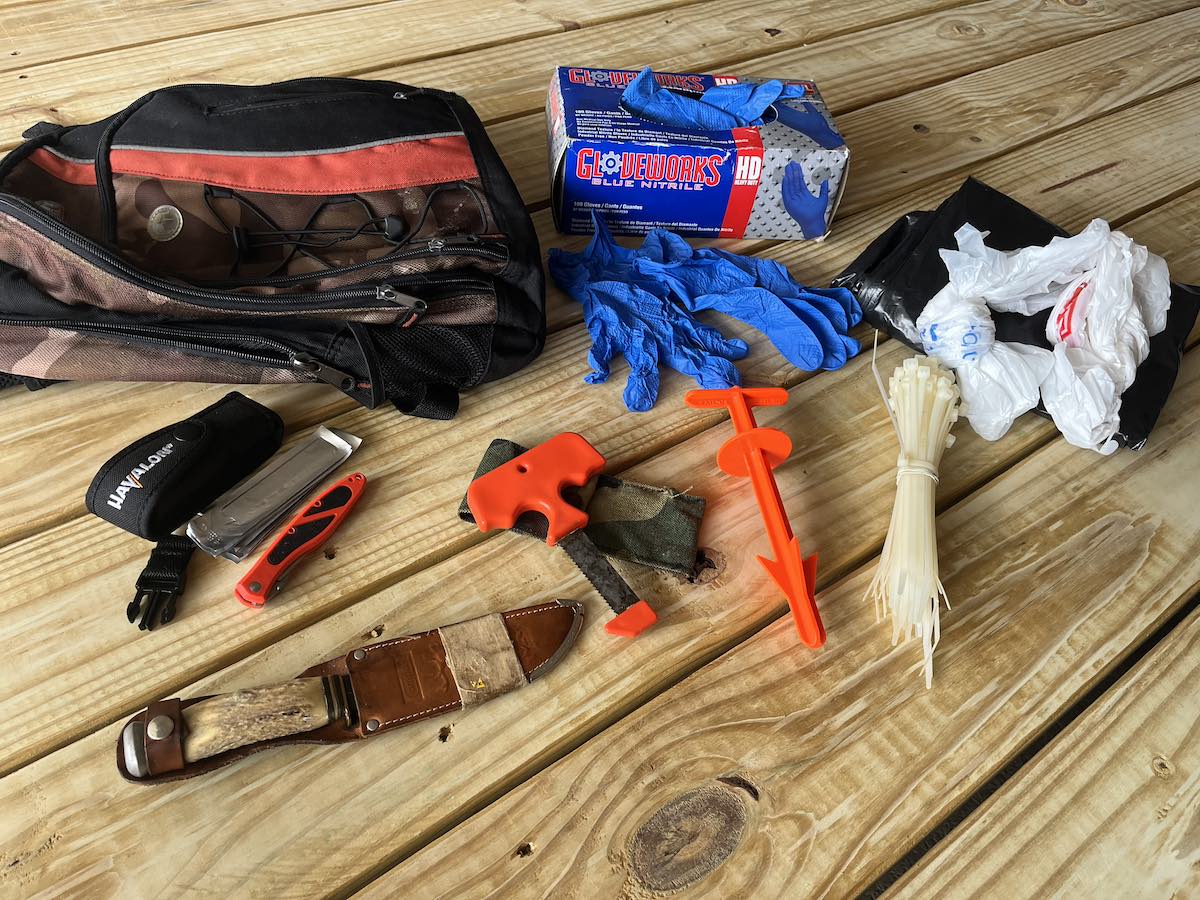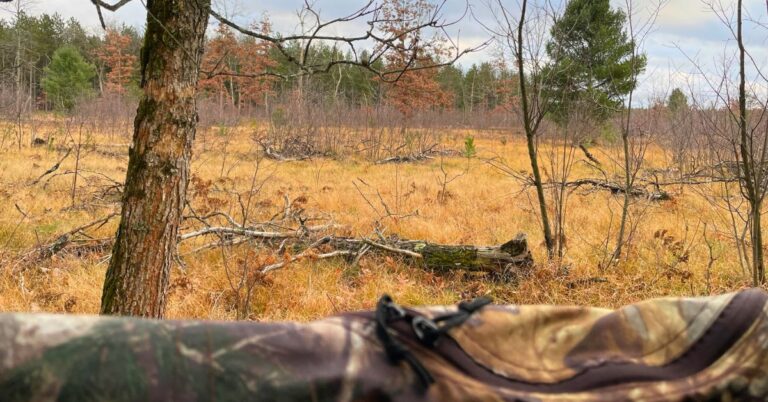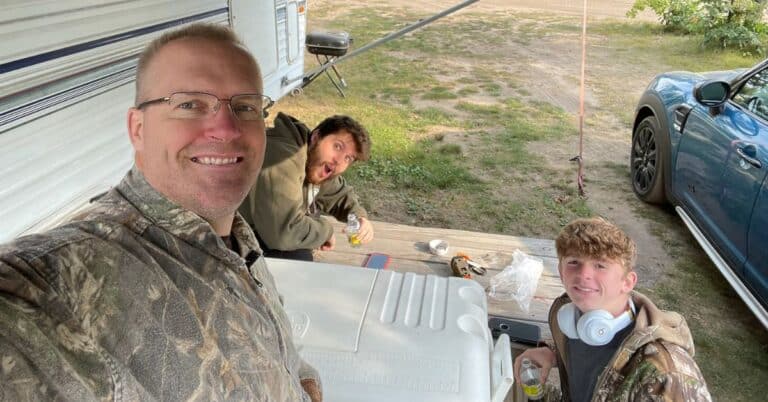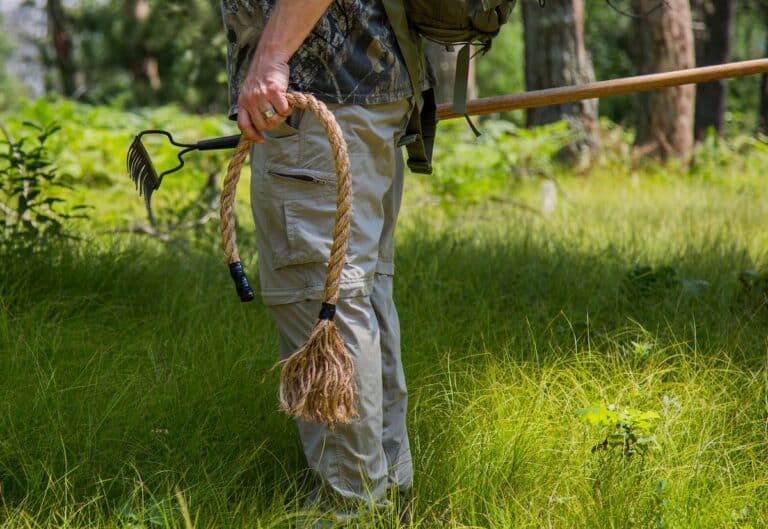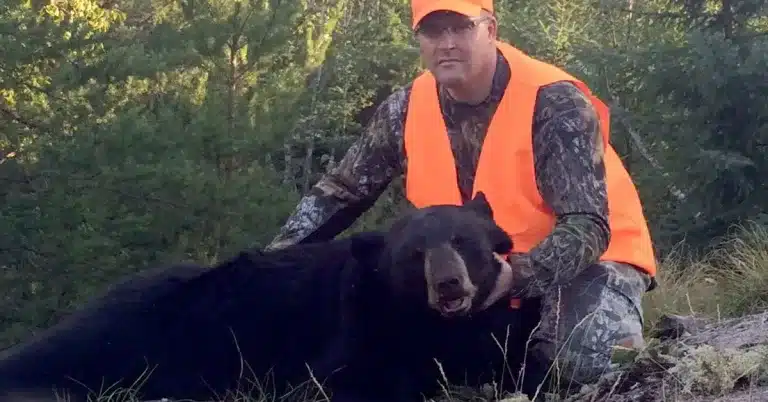Your Field Dressing Kit: What Every Michigan Deer Hunter Needs
There’s nothing quite like the thrill of a successful hunt on Michigan’s public land, especially when it comes to whitetail deer. But the work isn’t over once you’ve made that perfect shot. Field dressing is an essential part of the process, and having the right tools can make all the difference. Let’s walk through what I always keep packed in my field dressing kit. Whether you’re a seasoned hunter or just starting out, this guide will help you be prepared.
I don’t field dress deer at the kill site. One reason is that I don’t want to leave a gut pile behind that could attract coyotes to my hunting spot. I prefer to drag the deer a bit further away or even to my car. This approach is beneficial if it’s gotten dark, as I can then field dress the deer in front of my car’s headlights.
The Essential Tools for Gutting a Deer
When it comes to my field dressing kit, having the right tools is crucial. Here’s a breakdown of what I keep in my kit:
1. Butt Out Tool
This may sound strange if you’re new to hunting, but this tool is a favorite in my kit. A lot of hunters will say “you just need a good knife” but the Butt Out Tool makes the process easier, faster and cleaner. It’s one of those tools that once you use it, you won’t want to be without it. It’s earned a spot in my field dressing kit.
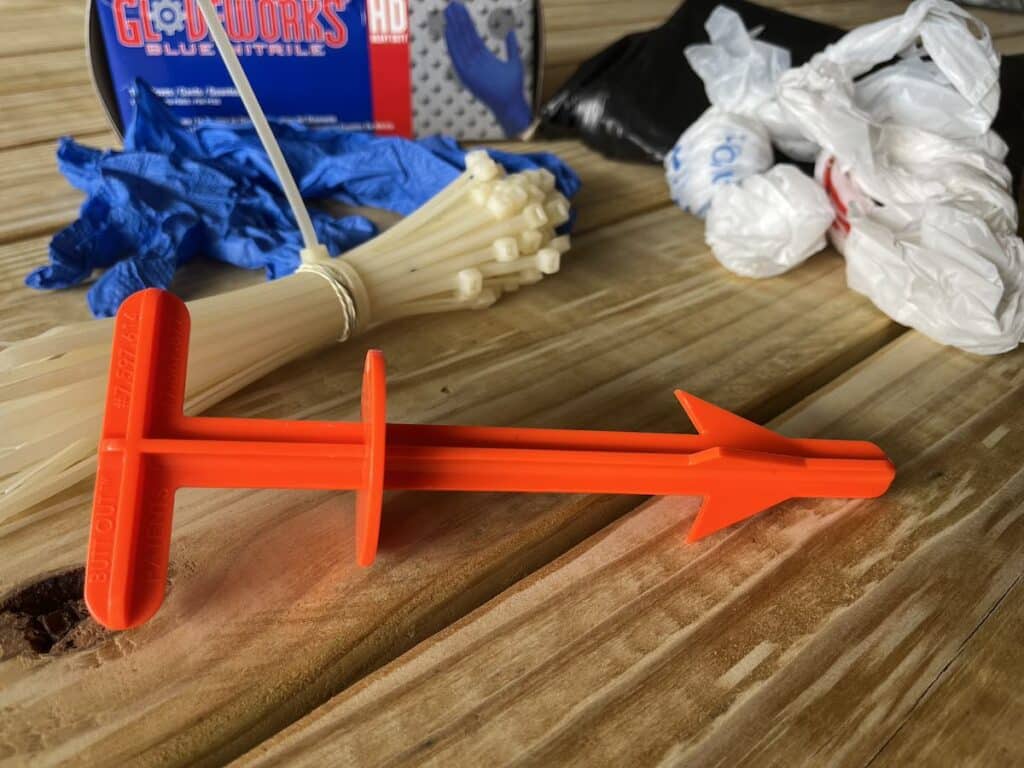
2. Zip Ties
These are perfect for tying off the deer’s rectum and esophagus after they’ve been cut, helping to prevent any contamination. They’re cheap, lightweight, and don’t take up any space in your pack—definitely a must-have.
3. Bone Saw
A bone saw is indispensable for cutting through a deer’s ribcage or pelvis, and I can’t recommend mine highly enough. It’s compact but perfectly sized for splitting the pelvic bone without risking a punctured bladder.
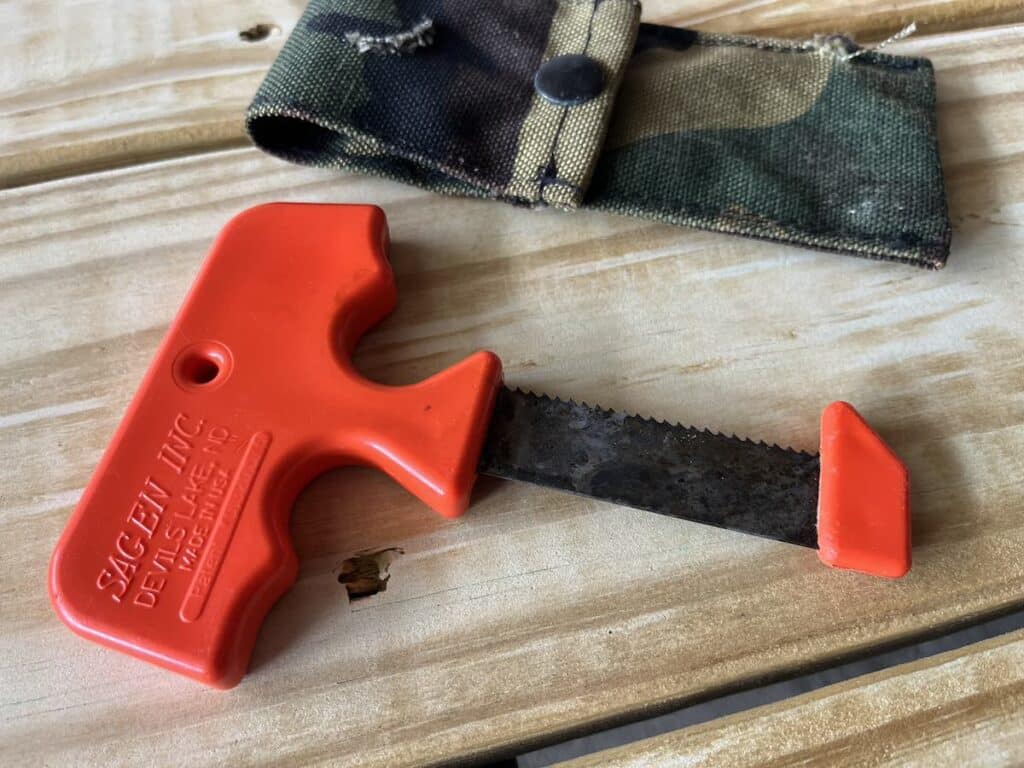
I love how it feels in hand—the depth and spacing of the cutting teeth are just right. Unlike competitor saws with teeth that are too large and spaced too far apart, this saw offers precision. Its teeth are designed specifically for bone, making it ideal for cutting through both the ribcage and pelvis while minimizing the risk of puncturing any organs.
I’ve owned the Sagen’s Hunter’s Field Saw for over a decade, and it’s the best field saw I’ve found for cutting pelvis bones on whitetail deer. It’s tough and doesn’t bend like the cheaper ones you might find at local stores. The quick sawing motion makes fast work of the pelvic bone.
This saw just plain works. It’s lightweight and compact, and the blade is flexible without permanently bending or going out of shape. The teeth stay sharp, ensuring reliable performance season after season.
4. Latex or Rubber Gloves
Including latex or rubber gloves in your field dressing kit is a smart move. Not only do they help keep your hands clean while you’re working, but they also protect you from any bacteria or parasites that might be present. Plus, having gloves on hand makes it easier to get a good grip on slippery organs, ensuring a more efficient and safer field dressing process. I always pack a few pairs—you never know when you might need an extra.
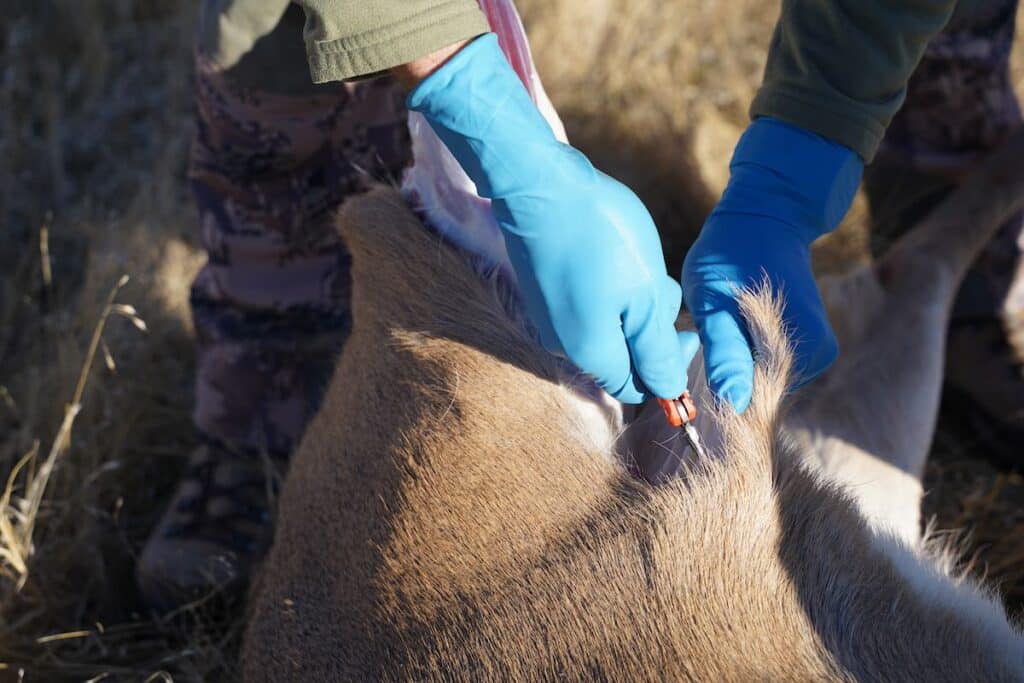
Knives: The Heart of Your Field Dressing Kit
No field dressing kit is complete without a good set of knives. I carry two main types, a razor-sharp replaceable blade knife and a fixed blade hunting knife.
1. Havalon Knife
This lightweight, ultra-sharp knife is perfect for precision cuts. I recommend the Havalon Piranta-Edge with an orange handle. The bright-colored handle helps prevent losing it in the field. Its replaceable blades ensure you’ll always have a sharp edge, which is vital for clean, efficient field dressing. Just be extra cautious when handling it!
Some old-school hunters might roll their eyes at the idea of replaceable blades, saying, “Just learn how to sharpen your hunting knife.” But I prefer the convenience of having a fresh blade ready to go.

When you need to change a blade in the field, wrap the old one in duct tape and safely dispose of it later.
To change the blade, be very careful—these knives are as sharp as a surgeon’s scalpel. Make sure you have good lighting; if it’s dark, a headlamp is useful, or you can drag the deer to your car and use the headlights. I typically snap the front of the old blade off against a tree, then use my Leatherman to carefully remove the back. Open the new blade from the back while it’s still in the foil, then attach it securely.
Someone once asked me if I’ve ever had a replaceable blade break off inside a deer. That hasn’t happened to me, but I did have a broadhead arrow break off once. I stayed mindful of where it was and left it alone. When I brought the deer to the processor, I made sure to alert them that the broadhead was still inside.
2. Fixed Blade Hunting Knife
While the Havalon is great for finer work, I also carry a more robust hunting knife for the heavier cutting tasks. It’s the workhorse of the kit, used for skinning, quartering, and general cutting duties. For a knife under $100, consider the Mora Garberg fixed blade.
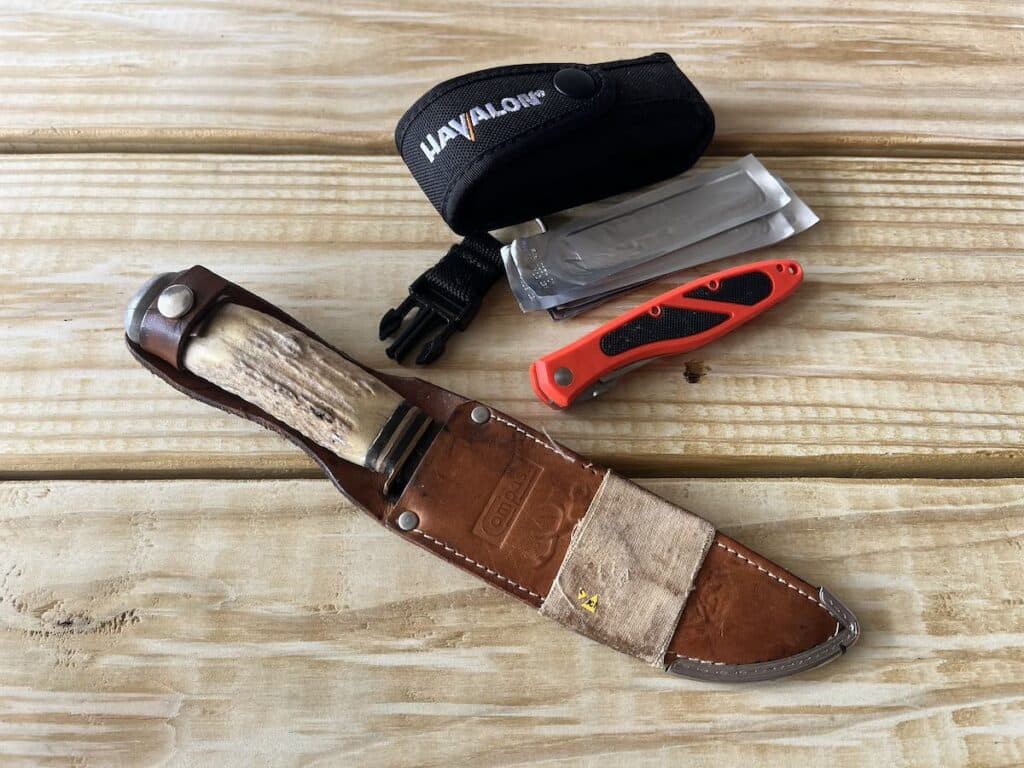
Don’t Forget the Bags
Field dressing can be a messy business, especially on public land where you want to leave minimal impact. I always pack two types of trash bags:
1. Small Trash Bags
These are perfect for containing smaller waste items like the deer’s organs or any other refuse that you want to dispose of properly.
2. Large Trash Bags
For the larger parts of the deer or any bulk waste, these bags are essential. They also come in handy for keeping your gear clean and dry.
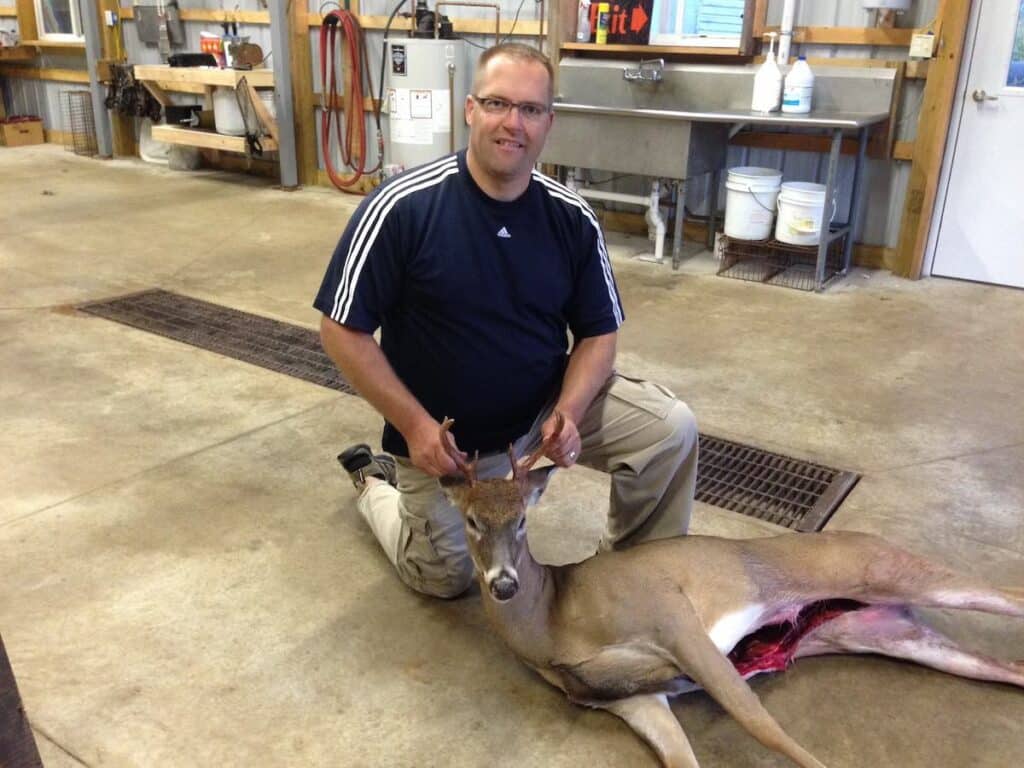
Optional but Handy: The Deer Drag
Depending on how far your hunting spot is from your car, a deer drag can be a game-changer. I own one similar to this Allen Deer Drag. If you’ve got a long trek back, this tool helps you transport your deer with less strain. It’s one of those items you might not need every time, but you’ll be grateful for it when you do.
Compact enough to slip into any pack’s accessory pocket, this tool makes hauling out a breeze. Its wire crimps held strong against a massive Midwest buck—no more fumbling with wet ropes in the dark.
A well-packed field dressing kit
Preparing for a successful hunt on Michigan’s public land means more than just having the right bow or rifle—it means being ready to field dress your deer efficiently. A well-packed field dressing kit ensures that when the moment comes, you’re not fumbling around for the right tool. Instead, you can focus on the satisfaction of the hunt and the camaraderie that comes with it.

So, whether you’re gearing up for your first hunt or refining your kit as a seasoned veteran, make sure these essentials are in your pack. Happy hunting, and may your time in Michigan’s great outdoors be filled with success and memories!

